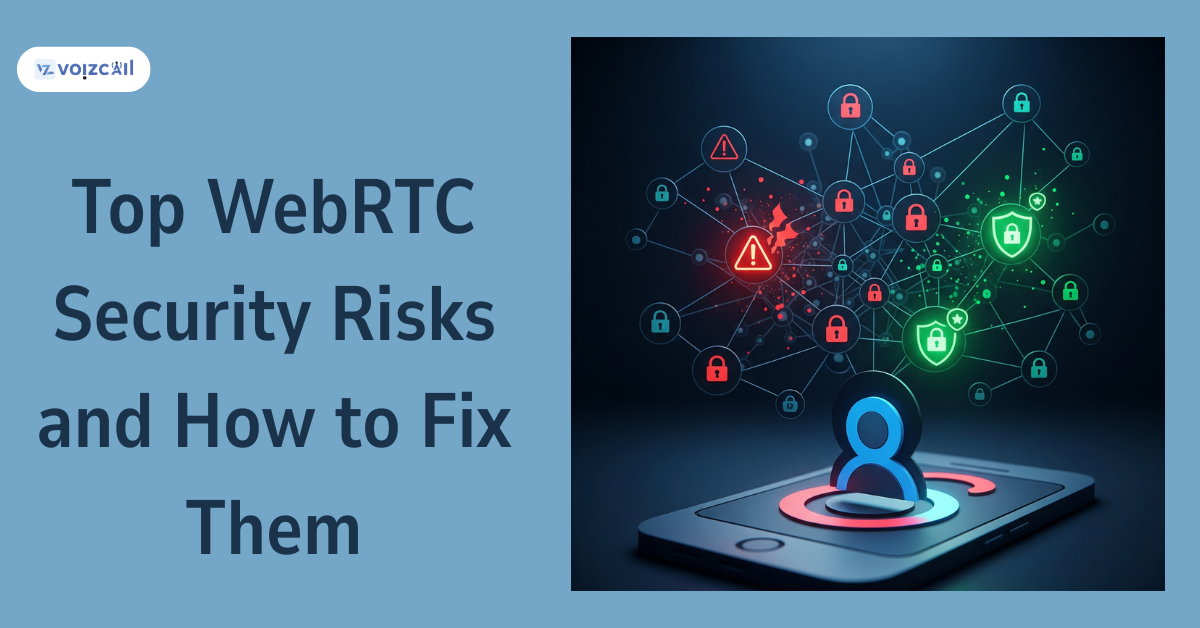


23/Jul/2025
Introduction: The Importance of WebRTC Security in the Year 2025
WebRTC (Web Real-Time Communication) is emerging as a technology of choice in an audio/video call directly through the browsers. Since it is a remote work year in 2025, with telehealth and online interaction going parabolic, WebRTC application products can be found anywhere, in online call centers or online classrooms.
However, the security risks of WebRTC are also gaining popularity as its popularity is going up. The companies must learn about these threats and how to secure their communication media in-case of leak of data, eavesdropping, and unauthorized access of information.
Outline
1. The WebRTC: What It Is and Why It Is Popular
2. The Increased Security Requirement of WebRTC in 2025
3 Generally Occurring WebRTC Security Risk
Call / Email for Sales Inquiry Today
IP Leakage
Man in the middle (MITM) Attacks
Insecure Signaling
Encryption Absence
Browser Vulnerabilities
Protecting Your WebRTC App
Impose End-to-End encryption (E2EE)
Secure Signaling Protocols
Toggle STUN/TURN setting
Scramble IP and DNS Details
4. Make browsers and libraries up to date
5. Developer and Business Recommended Practices
6. Reflections: WebRTC is not your weakling it should be your strong point
1. What and WebRTC Why it became popular
WebRTC has enabled sharing of voice, videos and data using the internet browsers and mobiles without the need to install plug-ins. It is quick, less expensive and very popular. WebRTC is the technological promise that businesses are crazy about because it makes the development of real-time communication a breeze and ensures integration with VoIP and CRMs, contact centers.
2. The Emerging WebRTC Security in 2025
Remote cooperation and video conference programs have literally exploded and becoming more and more important than before using WebRTC-powered platforms. VoIP and WebRTC systems are being attacked by hackers to steal sensitive information, hack into sessions and disrupt the availability of service.
The security of user identity, the IP addresses of patrons devices and information streams is a business-important issue.
3. Valuable WebRTC Security Threats
IP Leakage
WebRTC may reveal all your internal IPs particularly within peer to peer situations, which implies they can be geo-tracked or even attacked.
Man-in-the-Middle (MITM) Attack
In case of signaling servers or connections being not-encrypted, the attackers might intercept messages being transferred or insert adverse information.
Insecure Signaling
Signaling is not built-in with WebRTC. Not every developer takes this into account, and the application can be compromised in case signaling is not encrypted.
Improper encryption
Without SRTP (Secure Real-time Transport Protocol) media streams will be possibly eavesdropped or tampered with.
Browser Vulnerabilities
Outdated browsers or browsers that are not properly set up may put your users at risk of the many security exploits relating to WebRTC libraries.
4. Securing Your WebRTC Application How
End-to-End Encryption
DTLS-SRTP should be used to encrypt media and data channels. This stops unauthorized users to read the contents of the calls.
Insert Secure Signaling Flagged Protocols
Signal communication should be with HTTPS and WSS (WebSockets Secure) to prevent against man in middle attacks.
Allow Correct STUN/TURN Setting
TURNs servers assist in concealing local IPs and guarantee a fallover connection bodes well in avoiding leaking of IPs.
Confuse IP and DNS Information
Prevent IP exposure as explained by browsers, and turn off the WebRTC IP handling. Additional security should be made by use of VPNs.
Maintain Libraries and browsers Updated
Always update yourself with the best WebRTC API and libraries. Make sure you implement new security patches in your platform frequently.
5. Developers and Business Best Practices
Conduct penetration testing on a regular basis
Put in place identity vetting in signaling
Routinely observe the activities of the computer and log strange behavior
Provide user level access control and permission to access.
Collaborate with secure Voice over Internet Protocol (VoIP) service providers who carry WebRTC defence as default
In Conclusion: WebRTC need not Be Your Achilles Heel
In 2025, real-time communication cannot go without being secure. Be it a WebRTC softphone development, creation of an online support system, or a video conferencing mobile application in its entirety, you can utilize proactive WebRTC security measures as your best bet in avoiding data breaches and privacy concerns.
The first step to take is to enlist your weaknesses, use the best practices in encryptions, and collaborate with providers with a high emphasis on secure communication.